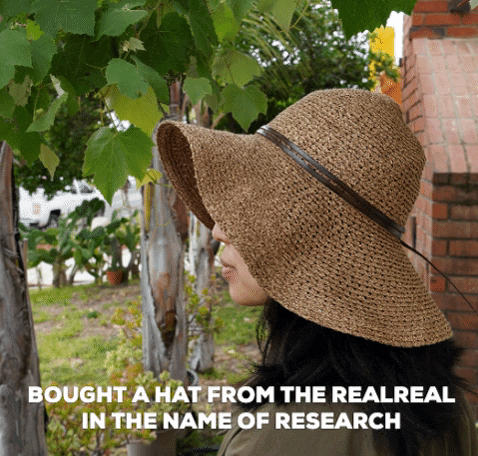I remember a time when shopping for clothes depended on two simple criteria: Is it cute? Is it affordable? Amidst the rise of cause-related marketing in fashion, food, and more, I’ve become a more sophisticated consumer, trying to be ethical in my purchases. The capitalistic framework of buying more to do good seems inherently flawed, causing more problems or at best, presenting a solution that is not the most effective or impactful option for the issue it aims to tackle. But the messaging is irresistible—live a purpose-driven life in a way that fits your existing and/or aspirational lifestyle.
Charity and fashion
Since Toms pioneered the One for One® model in 2006, giving one pair of shoes away for each pair purchased, other companies have followed suit. The “buy one, give one” concept is easy to advertise, easy for people to understand and latch on to in its simplicity. That simplicity hasn’t panned out so neatly in reality, as charity typically doesn’t address root issues, and in fact, often reinforces or creates additional problems. The consumer may feel good buying shoes knowing that someone in need will receive a free pair, but the net result may be that it damages the local economy. As Matheson Miller, director of PovertyCure, a group promoting entrepreneurial solutions to poverty says in a Wharton article, “Poor people aren’t poor because they lack stuff; they’re poor because they lack the infrastructure to create wealth.”
A simple cause-related marketing message can get consumers emotionally invested in ways that an unaffiliated brand can’t.
Toms has since pivoted to a more thoughtful strategy of diverting a third of their profits for social good, but their simple One for One® message is how they got themselves on the map and still what most people associate them with. Their short and clear answer to the brand question “Who are you?” was emotionally resonant with swathes of well-dressed young people with a heart to help others. I remember seeing student ambassadors tabling for Toms on a college campus, who strongly identified with the brand. I once tried to explain to a friend why the original Toms model, as well as packing up used clothing to ship to a third-world country, are not great ways to help people, and she took personal offense. Our relationship actually cooled as a result of that discussion over Toms.
A simple cause-related marketing message can get consumers emotionally invested in ways that an unaffiliated brand can’t. Though everyone may mean well, the winner of cause-related marketing in fashion is generally not the people the company purportedly intends to help. It’s ultimately the Toms, the Warby Parkers, the companies catering to a fashionable crowd wanting to buy and easily dispose of old clothing with an added perk of feeling that they’re doing good.
Sustainability and fashion
Sustainability is an increasingly critical issue as fast fashion takes over the globe and landfills. When I see that a t-shirt from the Gap has a leafy green symbol indicating some sort of sustainable sourcing, I feel a bit better buying that than another shirt, even though I have little knowledge of what it means. Unfortunately, most consumers don’t have the time or will to do research. Complexity will create barriers to the point of purchase, as it has in environmentally conscious shoppers looking for leather accessories.
I got to thinking about the leather vs. vegan leather debate after asking my sisters which purse I should buy for someone. One answered that she doesn’t understand why anyone needs more than two purses (one big, one small) and the youngest said she agonized over her first grownup work bag and finally settled on a leather one after deciding she would use the tote her whole life. “Till death do us part” seems extreme for a bag (and she has a long life ahead of her so I wouldn’t be surprised if she breaks her purse vow at some point).
Still others go the vegan leather route until they realize that it might be more harmful having to replace vegan leather which cracks and also releases microplastics released into the environment. There’s no obvious optimal choice other than buying nothing at all and using what you already have. In a world where influencers don’t appear in the same outfit more than once and a woman wearing the same outfit daily makes the news, the slogan we really need advertised is “Wear what you have and wear it over and over.”
But what company selling new merchandise would advertise a truly sustainable message of buying nothing? A message that is more realistic as well as alluring would be one that makes clear in an immediately understandable way that their apparel is the one to buy for its sustainable practices. Secondhand retailers could certainly own that message but I’ve noticed that online shops like The RealReal and Vestiaire Collective emphasize the affordability and authenticity of buying designer clothing used, with sustainability as a secondary consideration. Brick and mortar stores like Buffalo Exchange and Crossroads Trading do highlight eco-conscious practices but thrifting requires an investment amount of time and energy that many are not willing to commit.
Transparency and fashion
Some retailers take up the mantle of transparency, promising to source their products ethically, not use sweatshops, etc. Everlane went as far as to trademark the phrase “radical transparency,” capturing the zeitgeist as consumers voiced their desire for clothing made in a way that is aligned with their values. That made their fall even harder when its radical transparency was revealed to be “just a nice tagline” by employees who spoke of being overworked, underpaid, and bullied, particularly if they’re Black. Systematic racism embedded in work culture is ubiquitous but for a company catering to customers who care about an ethical supply chain, it’s also off brand and a PR disaster when the story gets out.
It seems as though Everlane’s marketing message was essentially greenwashing and its real values came out in the shakeout. A collective of employees compiled a document outlining the “Convenient Transparency” of Everlane, filled with examples of the racism they experienced as well as a generous section of recommendations on how the company could move forward. The fact of the matter is there’s nothing convenient about true transparency, sustainability, and charity. All are bound to be complex and nuanced if they’re tailored for causes instead of just tools for marketing and sales.
Leather bag photo by Jed Owen




Ask for help.
We are kind, thorough and ready when you are. You just need to ask.